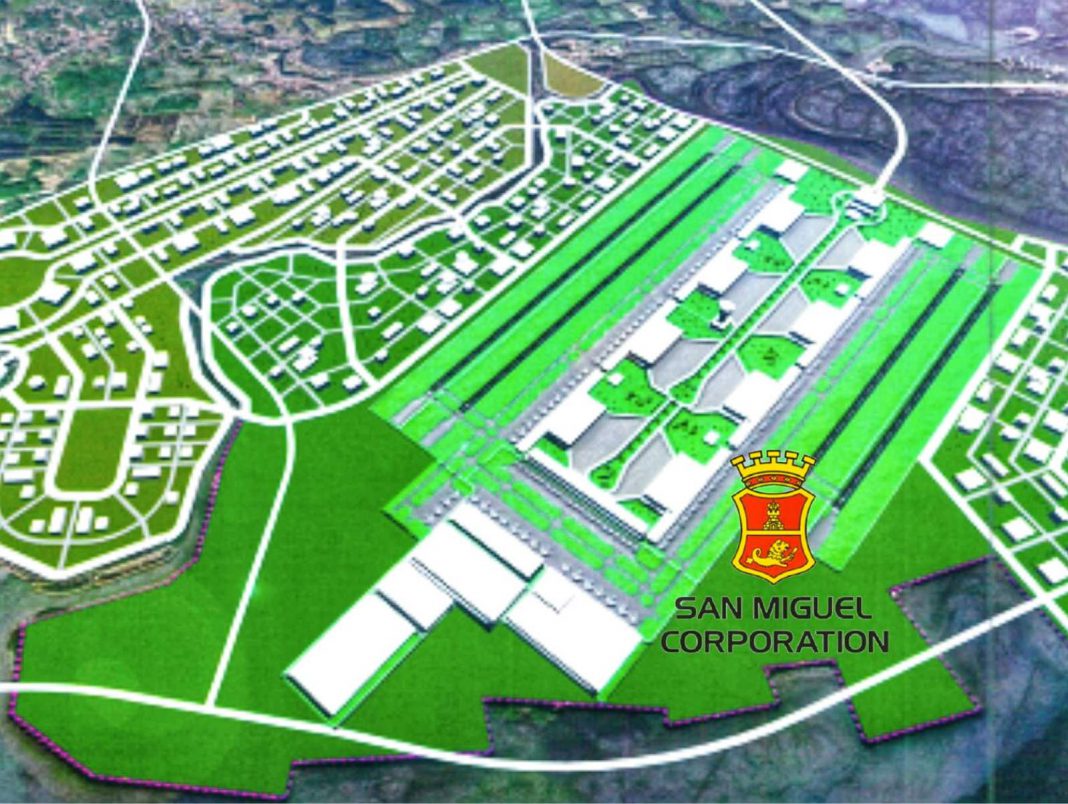The New Manila International Airport (NMIA) project, set to be the country’s largest international airport with four runways, is being built not on reclaimed land, but on existing low-lying land that, historically, is vulnerable to heavy flooding and was converted to commercial fishponds.
San Miguel Corporation (SMC) president and CEO Ramon S. Ang said it is important to clarify the nature of its airport project amid recent discussions surrounding Manila Bay reclamation projects.
The construction of the airport project, covered by Republic Act 11506, does not involve creating new land from Manila Bay, Ang clarified.
Rather, he said, it involves re-developing existing land, that had been inundated by water in previous decades due to factors that include flooding from heavily-silted river systems, conversion to fish ponds and over-extraction of groundwater that made it more susceptible to land subsidence, among others.
“The airport project does not involve reclamation. The project site has existing, valid land titles indicating its original status as land. Due to natural processes over time, this land had become prone to regular inundation. Instead of creating new land, we are redeveloping it to its former state ensuring its productive and sustainable use for the future,” Ang said.
Worth noting is the fact that the site is an island, as can be seen in maps of the Department of Environment and Natural Resources (DENR) and the National Mapping Resource Information Authority (NAMRIA) from the 1990s.
Surrounded by the Meycauayan, Taliptip and Maycapiz rivers, the low-lying land has been converted into fish ponds. This has, however, contributed to flooding in nearby towns, as the flow of the rivers out to Manila Bay had been impeded, and since the rivers themselves had become shallow due to siltation and pollution.
Ang reiterated that the land re-development is being done with international experts and partners including global maritime services expert Royal Boskalis, to ensure that it follows the strictest international standards in environmental and social impacts mitigation.
As part of the airport’s development, SMC is also implementing a massive river cleanup and rehabilitation effort covering not just the nearby Marilao-Meycauayan-Obando river systems (MMORS), but other rivers throughout Bulacan, to help address the province’s perennial flooding problem.
“Again, our goal with this massive project is to rejuvenate the inundated land and repurpose it into a more productive and transformative asset for Bulacan, the country and the Filipino people. The NMIA will not only provide a world-class facility, it will also serve as a catalyst for local and national economic growth, opening doors to countless job opportunities and paving the way for a future-ready Philippines that is competitive on the global stage,” Ang said.
“We will stay committed to ensuring that this development uplifts the lives of our kababayans and balances progress with responsibility,” he concluded.














